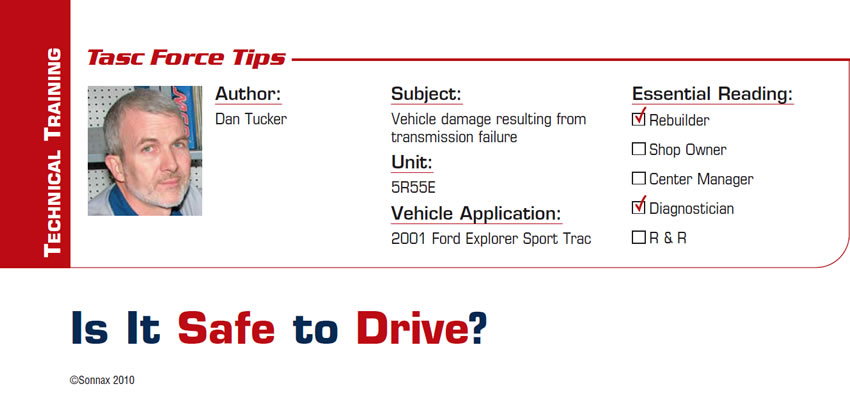
TASC Force Tips
- Subject: Vehicle damage resulting from transmission failure
- Unit: 5R55E
- Vehicle Application: 2001 Ford Explorer Sport Trac
- Essential Reading: Rebuilder, Diagnostician
- Author: Dan Tucker
“Is it safe to drive?”
“How long do you think it will last?”
“Can I make it on my trip and back?”
Do any of these questions ring a bell? If you have been in the transmission business for a while, you have heard these exact questions, and similar ones, many times before. With the economy struggling and customers “scrapping” to get by, we understand why they are apt to ask such questions.
Knowing about specific transmission problems still doesn’t stop folks from asking whether it’s OK to keep driving their vehicle. A customer has a 4L60-E transmission that has no reverse, second or fourth and he wants to know whether he can drive it to work this week or would it last until his next payday. Another customer has a 4T65-E with a P1811 code and wants to know whether they can make a trip over the weekend, or yet another customer who has a 5R55E with a broken third-gear band wants to know whether it is safe to drive.
These are questions we have answered in our shop many times over the years, and most of the time we tell them: “Yes, you can drive it, but it could fail on you at any time.” I can say that after a recent 5R55E that came in, we’ve changed our attitude concerning what we tell our customers about driving vehicles with transmission problems.
The vehicle that opened our eyes was a 2001 Ford Explorer Sport Trac with a 5R55E (Figure 1).
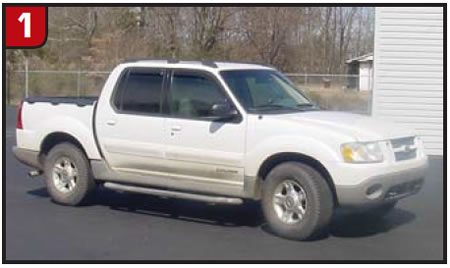
The Explorer came in on a wrecker. We’d never worked on it before, and this was a first-time customer for us. The customer told the secretary on the phone that they were driving down the road at better than 50 mph when the vehicle made a loud pop and quit pulling. We went out and tried to start the Explorer and it would not start. The shifter cable felt as if it had been disconnected, but a look under the vehicle made it evident that it had much more than a broken shifter cable. Time to get the riding lawn mower and pull it into the shop.
Once the Explorer was in the shop, we did a scan and found several codes, including electrical-circuit codes for the transmission. But a code that stuck out was a P0733, which is a ratio error in third gear. On the 5R55E, the P0733 usually means a broken intermediate band. We also noticed that both air bags had been activated recently. We lifted the vehicle and were amazed when we saw how much damage there was. All the electrical-circuit codes were showing up because the transmission main wiring harness had been severed by pieces of the transmission case. Flying pieces of the case also had broken the shifter cable, causing the disconnected feel we noticed earlier.
I called the customer and asked him what had happened. He told me he was driving down the road and heard a noise in the transmission area, and a split second after that BOOM the air bags went off. Can you imagine driving down the road and both air bags going off, and you are not even in an accident – yet!? Thank the Lord he managed to pull over and stop the vehicle without having an accident. I asked him whether he had been having transmission problems before this happened, and he said, “Well, it had been shifting late for a while.” I asked him how long the OD light had been flashing, knowing it had the P0733 on it, and he said, “For a few months.”
As you can see in Figure 2, the Explorer’s transmission case was destroyed, with the damage appearing to originate in the area of the intermediate band.
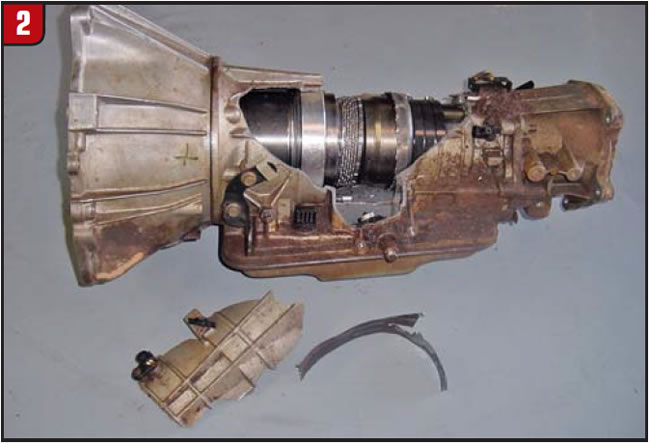
The next photo is a close-up of the direct drum – or, should I say, what is left of the direct drum (Figure 3).
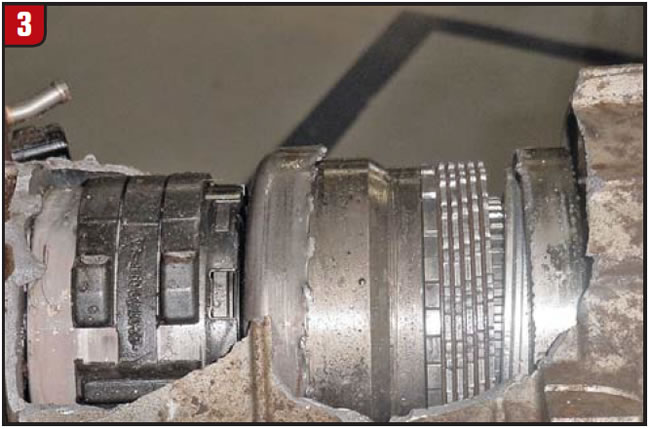
With the transmission out of the vehicle, you can see where the pieces of the transmission case hammered the firewall (Figure 4).
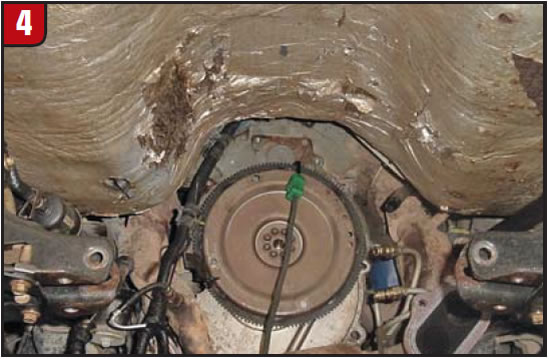
I will be the first to admit I know very little about the air-bag or Restraint Control System. I did a little research and found that the Restraint Control Module is inside the cab just above the bellhousing. I have no idea why it discharged both air bags, but I can assure you they both went off (Figure 5). The Explorer was in great shape and nothing was damaged except the transmission, shifter cable, transmission wiring harness and, of course, the air-bag system. With no signs of any other impact- or accident-related damage, I can only conclude that the self-destructing transmission triggered the air-bag deployment.
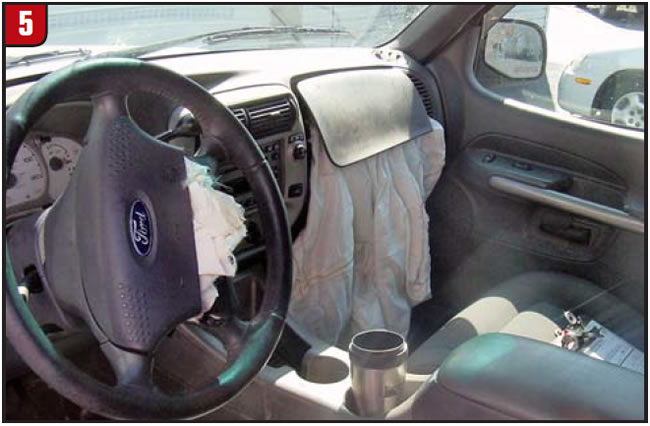
When I first looked at this vehicle, it took a while for just what had happened here to sink in. Now as I look back and think it over, I am SO THANKFUL that this was not a vehicle I had checked out and told the customer it was safe to drive. The funny thing is, the very next day I had a customer come in with a 2000 Ford Ranger with a broken low-reverse band – you know, it will not back up and has no engine braking in manual low – and the customer asked me whether it was safe to drive it. Before I could stop myself, I told them they could but added, “I would recommend wearing a helmet.” Then I explained to them what had happened the day before.
I think this is a serious issue, even though it is rare for such damage to occur. I now know that a situation such as this could happen, that there is the possibility of air bags going off while the vehicle is being driven as a result of transmission failure. Clearly, it could cause a terrible accident and even loss of life.
Is it safe to drive? I know I will think before I ever say yes again.

Dan Tucker is owner of Tucker’s Transmission in Pine Bluff, Ark., and a member of the TASC Force (Technical Automotive Specialties Committee), a group of recognized industry technical specialists, transmission rebuilders and Sonnax Industries Inc. technicians.
©2010 Sonnax Industries













